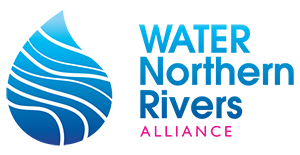Purified Recycled Water (PRW)
Purified Recycled Water has been reclaimed from wastewater treatment. Recognising the public’s concerns about reclaimed water, regulators require this water to be treated and tested to a much higher standard than regular tap water.
A common misconception is the amount of solids in household wastewater. It is actually primarily liquid given all the water that is used in the kitchen, laundry, sinks and showers. Wastewater treatment separates solids from liquids. The solids can be dried and processed for reuse as natural fertilisers and soil supplements – a wonderful example of a sustainable, circular resource. The liquid, known as effluent, undergoes further stages of treatment.
Four levels of wastewater treatment
Primary treatment is simple sedimentation; letting the solids sink to the bottom and allowing the effluent (liquid) to flow off. This is the function performed by a simple septic tank, typically used by households not connected to central sewage services.
Secondary treatment involves biological reactions in the effluent to consume organic particles.
Tertiary treatment further removes biological, chemical, and pharmaceutical compounds using filtration and disinfection. This process is similar to how we treat drinking water. After this it is safe for “environmental release” – releasing the treated wastewater into a body of water such as an ocean, wetland, aquifer or river.
Advanced treatment uses technologies similar to those used in desalination to further treat water. This produces a highly purified product…..so pure it can be used in sensitive applications like manufacture of aerospace components or pharmaceuticals. See the video below Designed For Purpose.
This Sydney Water website has some more information about wastewater treatment, reuse, and recycling of byproducts.
Non-potable reuse (non-potable means not used for drinking)
An example of a non-potable reuse scheme is the purple pipe system at Ballina. This water has received advanced treatment, and is reused for non-potable purposes in housing developments, industry, agriculture, and watering of sports fields and golf courses.
Indirect potable reuse (used for drinking)
After treatment, wastewater is released to the environment and mixes with other water in a river, aquifer, or dam. Indirect potable reuse occurs if a community takes their drinking water from the same body of water.
This is happening in Perth, where Purified Recycled Water is used to recharge the Yarragadee aquifer which is an important drinking water source for Perth. South East Queensland (including Toowoomba) also has Indirect Potable Reuse in their Western Corridor, which is used to recharge the Wivenhoe Dam when dam levels drop.
Few people realise that we already have a de-facto form of indirect potable reuse in the Richmond & Wilsons Rivers. Treated wastewater is released into the Byron Creek at Bangalow, which flows to Wilsons River. When there is sufficient flow in the Wilson River, pumps transfer water from the Wilsons River Source near Eltham to Rocky Creek Dam and the Nightcap Treatment Plant. This water then becomes part of the Rous supply. This is a very normal process. For all indirect reuse, treatment and testing ensure that water is safe for consumption.
Direct potable reuse
For direct potable reuse, advanced treatment technologies like those used in desalination (see above) are applied to further treat recycled water. This produces a highly purified product, as the level of treatment is significantly higher than what is required for other drinking water sources. Given the public’s concerns about purified recycled water, it must be stringently tested before distribution.
Watch video below on Purified Recycled Water
(part of Think & Drink series on Water360 website)
Which reuse option? Balancing the costs and benefit
While direct potable reuse is more expensive during the treatment phase, it is actually cheaper over its life-cycle because the purified water can be distributed in the existing network with water from other sources. The purple pipe system for non-potable use is expensive by comparison, because it requires laying down an additional set of pipes in the suburb or development.
Purified Recycled Water FAQ
But isn’t it well… yucky?
The truth is, in much of Australia, wastewater treatment plants discharge treated water into the environment upstream from places where water is withdrawn for drinking water. For example, Kyogle discharges upstream of Casino. Water engineers call it “defacto recycled water”. Many of us are already drinking recycled water but without the advanced treatment direct Purified Recycled Water schemes offer.
Do we have any Purified Recycled Water in Australia?
Lots. Purified Recycled Water is used in agriculture, industry and parks, and to replenish drinking water supplies. Perth is on track to recycle 30% of its wastewater by 2030. Brisbane currently uses most of its water in industry but plans to use Purified Recycled Water to refill Wivenhoe Dam if it gets too low. Outside Australia, from London to Singapore, PRW is common and its use is growing. Namibia has been using it directly without incident since the 1960s.
What about EDCs in the water?
Endocrine Disrupting Compounds (EDC) are chemicals that have the potential to disrupt our (and other animals’) hormonal systems. There are good reasons to be concerned about the prevalence of EDCs in the environment. But the idea that we need to worry about them more in Purified Recycled Water is incorrect. In fact, the truth is EDCs, like plastics, are already widespread in our environment. Purified Recycled Water is more thoroughly cleaned and more stringently tested than normal drinking water. If you’re worried about EDCs, PRW is the way to go.
So if Purified Recycled Water is so good, why isn’t it more widespread?
The science is sound and the technology mature, but many water utilities are reluctant out of fear of community resistance. This is the major reason that Rous County Coucil gave for not putting PRW higher on its list of options. Only you can help convince them otherwise.
